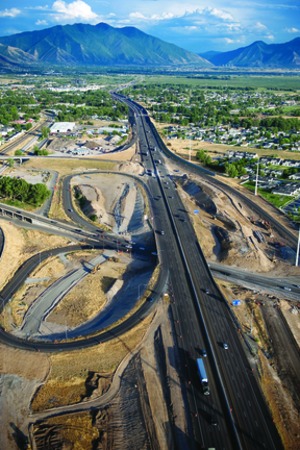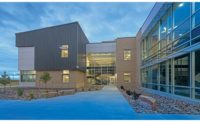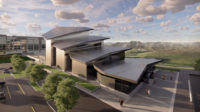HDR, an architecture, engineering and consulting giant headquartered in Omaha, Neb., is perhaps best known for its highway, transit and water projects. The firm employs more than 7,800 professionals in 185 locations worldwide.


Twelve of those offices are in the Rocky Mountain region, with 690 employees focused on the firm's transportation, power/energy, federal, water/wastewater, natural resources, health-care, science and technology markets.
“We are one of the most diversified companies you'll find—which is ultimately what enabled HDR to weather the recession,” says Bill Barnhart, the firm's senior vice president of power delivery services.
Founded in Omaha in 1917 as the Henningson Engineering Co., the employee-owned firm pioneered water and sewer systems for new cities throughout the Midwest.
In the 1950s when Henningson Engineering became Henningson, Durham and Richardson (later shortened to HDR) and began opening branch offices, partners Chuck Durham and Willard Richardson learned to fly, making it the first architecture-engineering firm in the nation to use aircraft for operations.
Today, HDR is poised to take advantage of energy-sector growth, especially as the U.S. seeks to gain energy independence. HDR has invested in renewables, including R&D and some patented designs, Barnhart says. Over the past 10 years, the firm has made it a priority to invest in entry-level graduates and junior staff to prepare for the next 10 to 20 years, Barnhart adds.
Core Markets
“Transportation remains a priority market,” says Brent Jensen, HDR Salt Lake City department manager. With the beginnings of a lull in large roadway design projects, opportunities remain with projects such as the Mountain View Corridor in Utah County and a variety of traditional highway projects, Jensen says.
The transit market sector, while not as robust recently, still offers opportunities, particularly in streetcar and bus rapid transit, he adds.
HDR will sustain its office staffing, though overall revenue from Utah projects will decrease now that design work on HDR's single biggest project, Interstate 15 CORE south of Salt Lake City, is 90% complete, Jensen says.
HDR, lead engineer on the project, is providing overall design management on three of the six segments and undertaking a number of corridor-wide design functions for the main north-south commuter route between Salt Lake City and Provo/Orem.
The project, on track for completion in 2012, reconstructs a 23.5-mile stretch of heavily traveled freeway, including restoration of 55 bridges. A team of 32 HDR offices and 15 subconsultants produced 11 design submittals per day at the project's design peak.




Post a comment to this article
Report Abusive Comment